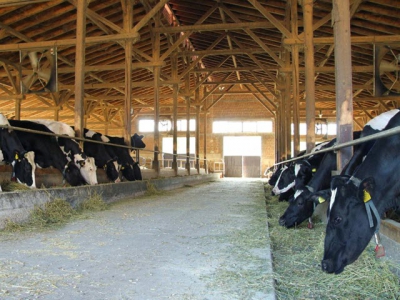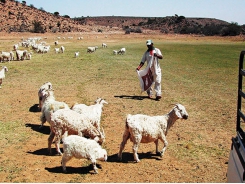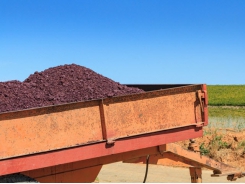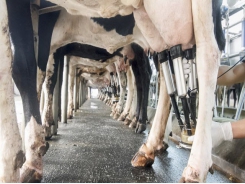Clay has multiple benefits as dairy cattle feed supplement

Clay supplements may improve feedstuff degradability in dairy cattle diets.
Dairy producers frequently add clay as a feed supplement to reduce the symptoms of aflatoxin and subacute ruminal acidosis (SARA) in lactating cows, but in a new study from the University of Illinois, researchers showed that clay can also improve the degradability of feedstuffs.
“Farmers are giving this clay, but they want to know if the corn silage or hay the cow is eating is affected. We found that, yes, the clay is changing the way the cow degrades feedstuffs,” said Phil Cardoso, associate professor in the University of Illinois department of animal sciences and co-author of the study published in Animal Feed Science & Technology.
Cardoso and his team tested the degradability of six feedstuffs — dried alfalfa hay, grass hay, wet brewers grains, ground corn, corn silage and soybean meal — along with clay added at the rates of 0%, 1% or 2% of dietary dry matter.
The researchers placed the feedstuffs into mesh bags and placed the bags directly in the rumen through a cannula. The bags were then drawn out at multiple time intervals (two hours to four days) and analyzed.
“There were some differences in how the feedstuffs degraded over time. When clay was added to grass hay at 2% of dietary dry matter, the digestibility and usage of the fat in that material was maximized. It’s better, and we didn’t see a decline in degradability of the other feedstuffs, either,” Cardoso said. “Overall, to maximize the benefits of clay, we’d recommend adding it at 1-2% of dietary dry matter.”
Cardoso’s previous research has shown that multiple types of clay are effective in handling aflatoxin, a toxic substance produced by fungal contaminants on feed. When the toxin is bound up by the clay, it is simply excreted from the cow’s body rather than being absorbed in the bloodstream. In addition, a 2018 study by Cardoso’s team showed that aluminosilicate clay improved cows’ immune function and reduced liver inflammation during an aflatoxin challenge.
Cardoso said, “From all of our work on this, I can tell producers [that] whenever they are facing the risk of aflatoxin, they should consider using clay without worrying about it binding other minerals or hindering forage digestibility. Rather, we’ve shown digestibility could increase. Of course, it’s important to ensure the specific clay product has been tested.”
The benefits of clay don’t stop there. Because the material attracts and binds positively charged ions, clay can make the rumen less acidic. This is important, particularly given the popularity of increasing grain concentrates in total mixed ration feed, which can lead to SARA. In a 2016 study by Cardoso’s group, cows challenged with excess wheat in a total mixed ration diet produced more and higher-quality milk and had higher rumen pH when fed bentonite clay at 2% of dietary dry matter.
“Basically, clay has all these benefits: It reduces aflatoxin toxicity, works as a pH buffer and also improves the degradability of some feedstuffs,” Cardoso said. “Producers should know this.”
Cardoso's co-authors on the article, “Improvements of In Situ Degradability of Grass Hay, Wet Brewer’s Grains & Soybean Meal with Addition of Clay in the Diet of Holstein Cows,” include M.E. Hollis, R.T. Pate, S. Sulzberger, A. Pineda, Y. Khidoyatov and M.R. Murphy.
Source: University of Illinois, which is solely responsible for the information provided and is wholly owned by the source. Informa Business Media and all its subsidiaries are not responsible for any of the content contained in this information asset.
Related news
Tools

Phối trộn thức ăn chăn nuôi

Pha dung dịch thủy canh

Định mức cho tôm ăn

Phối trộn phân bón NPK

Xác định tỷ lệ tôm sống

Chuyển đổi đơn vị phân bón

Xác định công suất sục khí

Chuyển đổi đơn vị tôm

Tính diện tích nhà kính

Tính thể tích ao




 Asia Coffee-Vietnam dull as holiday mood drags, Indonesia…
Asia Coffee-Vietnam dull as holiday mood drags, Indonesia…  3D technology helps dairy farmers identify sick cows
3D technology helps dairy farmers identify sick cows